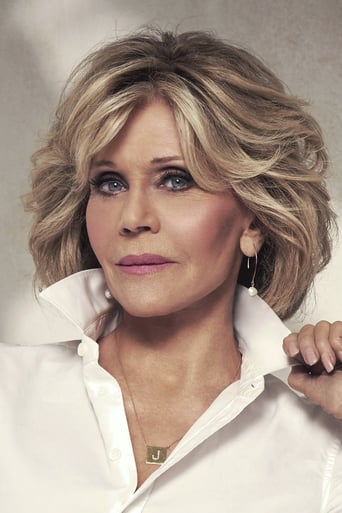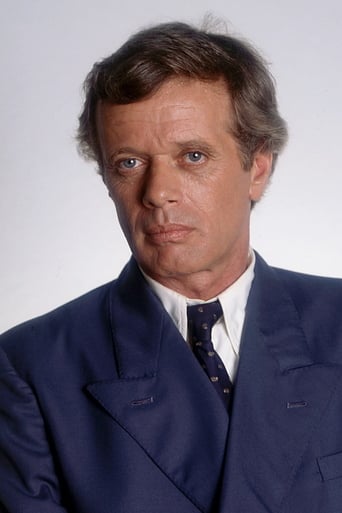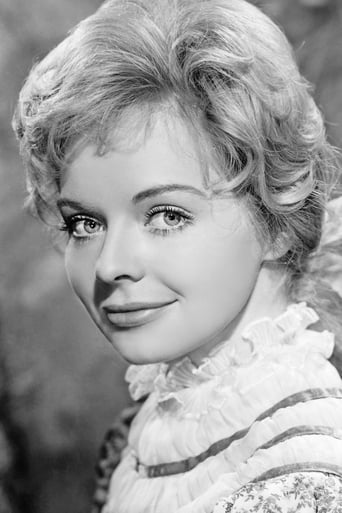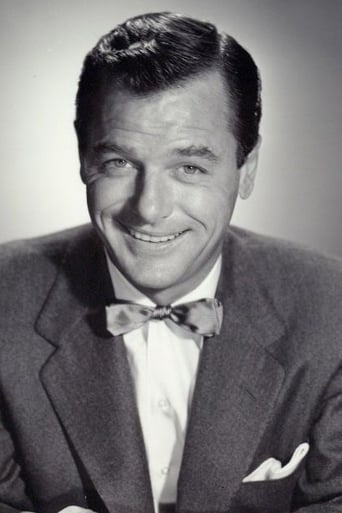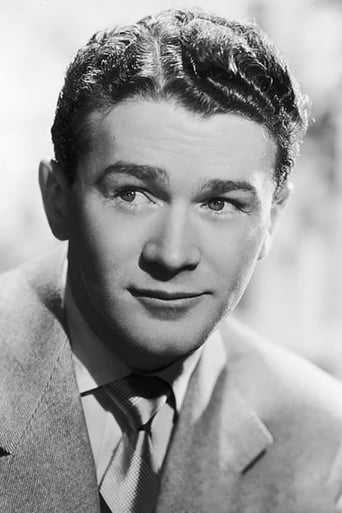Linkshoch
Wonderful Movie
Voxitype
Good films always raise compelling questions, whether the format is fiction or documentary fact.
Usamah Harvey
The film's masterful storytelling did its job. The message was clear. No need to overdo.
Janis
One of the most extraordinary films you will see this year. Take that as you want.
gsygsy
Outstanding movie that packs a very powerful punch. When it was made, a new energy was firing American cinema - EASY RIDER came out the same year, FIVE EASY PIECES the year after. As the war with Vietnam dragged on, old values were being fearlessly re-examined. The dance hall of Horace McCoy's Depression era novel here becomes the stage on which the more questionable of those values are acted out.For all the characters, what the marathon is and what it means depends on what they need to get out of it. For James and Ruby (Dern and Bedilia) it's food for themselves and the baby that's on the way; for Alice and Joel (York and Fields) it's the chance of being seen by someone influential from the movie industry; for Gloria (Fonda), and for the Sailor and Shirl (Buttons and McLerie) it's to earn some money; and, as succinctly expressed in a scene between Robert (Sarrazin) and Rocky (Young), for the former the marathon is a competition, whilst for the latter, it's a show. As the marathon proceeds, the physical reality of it takes its mental toll, and its true meaning becomes clear. Rocky turns out to be right: it's an entertainment for those without much, so that they can feel better about themselves by watching the suffering of those with less. I write this nearly 80 years after McCoy's book was first published, nearly 45 years since the movie was released: regrettably, not much has changed.I saw the movie when I was a teenager, when it first came out. I retained some images from it, but I don't think it could have struck me then as it did last night when I watched it again, this time on DVD. It's an immense work by Sydney Pollack and his collaborators - particularly his screenwriters James Poe and Robert E. Thompson, his DOP Philip Lathrop, and his editor Frederic Steinkamp. The derby sequences in particular are tremendous - the camera gets amongst the competitors, forcing you to really feel what they're going through. It's as discomforting as it should be.The performances are all superb. Although Susannah York was apparently dismissive of her contribution, it is probably the best work she did on film. Similarly, Gig Young, who is extraordinarily good. Jane Fonda, Allyn Ann McLerie, Red Buttons, Bruce Dern, Bonnie Bedelia, Robert Fields, Madge Kennedy, Al Lewis and the wonderful Michael Sarrazin - all terrific.I write this early on Christmas Day. IT'S A WONDERFUL LIFE will be on TV at some point. Quite right, too, it's a great movie. But in my heart I feel that its seasonal message of hope should be balanced by a recognition that there are many - too many - in whose lives there is no hope. An annual peak-time showing of THEY SHOOT HORSES, DON'T THEY? as a companion piece to the Capra would act as the necessary bracing reminder.
mark.waltz
With society moving towards degradation in the late 1960's, filmmakers took more serious looks at earlier eras romanticized during the golden age of Hollywood. The popular dance marathons of the early 1930's, most famously done in Atlantic City, were a cavalcade of desperate young people trying to survive through the depression. This movie serves as a metaphor for the lost youth of the late 1960's dealing with civil rights and a war in Vietnam they wanted no part of.Jane Fonda and Michael Sarrazin are just two of the contestants caught up in this hoopla as they struggle to last through the grueling dances, sprint races and bad entertainment provided by some of the pathetic people trying to either gain fame or win a sponsor. The faces of all of these contestants show their world weariness, especially Fonda's who seems to long for the peace of death. Add in Gig Young as the emcee/producer of the marathon, a lecherous man who has no qualms in attempting to rape one of the exhausted dancers (Susannah York). He is both equally ruthless and charming as he utilizes every trick in the book to put on a show. Reminding me of the emcee in "Cabaret", it is no wonder that when Kander and Ebb did their own marathon musical "Steel Pier", the emcee/host of that marathon was a combination of both characters in this and in "Cabaret".Depression films of the past fifty years have touched on the many aspects of survival, whether through the violence of "Bonnie and Clyde" or the sleaziness of "Ironweed". "They Shoot Horses" takes on the world of entertainment and adds in some sports plus lots of desperation, despair and finally exhaustion towards life itself, reminding us that each era has had its share of miserable social moments which looked like the end of civilized society.
augurar
When I saw this film, I initially thought it was incredibly unrealistic. But it turns out, to my surprise, the historical aspects of this film are pretty close to reality. Apparently dance marathons in the 1920s and 30s, also known as "walkathons", did proceed something like the one depicted in the film. Many of the details of the competition — 10 minutes of sleep per hour, several meals a day eaten while standing, sponsors, contestant performances, the proposed "wedding", special endurance events — actually occurred in historical dance marathons. Even the ending is not too far from reality — in 1928 a Seattle woman attempted suicide after finishing in fifth in one such competition.However, despite the apparent historical accuracy of this film, it remained unconvincing due to poor writing and characterization. The character played by Jane Fonda was supposed to seem desperate and bitter, I think, but just came off as cruel and dislikable. She wasn't just defensive, she seemed to go out of her way to hurt and antagonize those around her. What a b****, seriously. The male lead was also underdeveloped; his only character traits were a sort of perpetual bewilderment and a vague fondness for the ocean and/or the sun. The MC was probably supposed to seem like a long-time showman with occasional moments of sympathy for the contestants, but his alternations between kindness and callousness just seemed inconsistent. The other characters functioned as sort of bipedal set pieces and were given even less depth and development than the main characters. In fact, the only development that seemed to happen during the film was a long, slow slide into exhaustion, both for the characters and the audience.This brings me to my second complaint — the pacing was rather poor. Due to the nature of the competition, there were long periods where nothing was happening. These could have been used to give us some more insight into the characters' thoughts, feelings, or motivations but instead the audience was treated to periods of boredom, sporadically broken up by miscellaneous events, few of which had any real significance to the story. The ending just came out of nowhere for me, although I figured out midway through what was going to happen due to the clumsily-administered flashbacks and film title. It was as if, after reaching a certain desired length for the film, they decided it had to end somehow and this was the quickest way. Since we never really got to see why the whole thing mattered so much to the female lead, there was no motivation for her sudden plunge into suicidal despair at the end. The intended metaphor is of a broken-legged horse, writhing in suffering on the ground. But all that I saw in front of me was a bitter woman who was apparently unable to cope with the tragedy of a ripped stocking, an unsuccessful acting career, and a rigged endurance competition. And the laconic male lead, while seeming to exude a sort of naive sympathy for everyone around him, didn't seem to have any good reason for assisting in the act. If he really cared about the Jane Fonda character, he would've taken the gun away from her and put her to bed.There were a couple of other things that bothered me here and there. One thing was the pointless partner-swapping somewhere in the middle of the film. The Fonda character has known the Sarrazin character for a few weeks at most, most of which was spent shuffling around half-asleep. Why would she even care if he sleeps with some woman? The whole thing just seemed contrived and unnecessary. A second quibble was with one of the last scenes of the movie, where the male lead utters the movie's line that makes the movie's title. To all you would-be screenwriters out there: DON'T EXPLAIN THE F***ING SYMBOLISM! It's enough to show the woman falling down like the horse in the meadow. We don't need to have the guy specifically tell the audience what it meant.If I had to say the one defining flaw of the movie, it was that it spent too much time showing us the particulars of the event and not enough letting us get to know the characters. Interestingly enough, by placing the focus on the event itself and not on its participants, the film effectively denies the characters their humanity, showing them instead as little more than livestock. As a result, the drama is reduced to spectacle and the viewer is placed in the same role as the people who attended these events back in the 20s and 30s. I don't think this was intentional, but it was still interesting. It kind of makes you wonder: why am I watching this?
Dave from Ottawa
The glam-shot lobby posters were misleading. This is powerful and uncompromising movie-making of the sort that only existed for a few years between the family friendly mid-60s and the blockbuster-driven late 70s. It features the role that got Jane Fonda away from her Barbarella-style sex-kitten image to emerge as one of the great movie actresses of the age. Fonda is Gloria, a hard-edged, world-weary woman, who has been lied to and used for so long and fallen so far down on her luck that she finds herself competing in one of those grueling, spirit- breaking, mind-destroying dance marathon contests that proliferated for a few years during the Depression when folks would do anything for money and which serves as an allegory for the age. The contest is shown in all of its harsh and ugly details. Competitors dance until they drop, getting counted out on the floor like KOed fighters, eat while dancing, even try to sleep against one another while their feet keep moving. They wash their hair and clothes in the ballroom sinks, try to sleep on narrow, stinking cots during the rare rest periods, and keep moving, always moving, for two months of unending misery. As cynical MC Gig Young (Oscar winner for Best Supporting Actor) points out, the spectators are not there to see a contest - they came to see folks worse off than they are. The film is shot in suitably harsh tones with unflattering lighting to point up the suffering on the actors' faces and uses semi-darkness to maximize the claustrophobic feeling of being stuck in the same building for so long and never seeing the sun. Michael Sarrazin plays a naive nice-guy who wanders in off the beach and finds himself in the contest. His is the viewpoint character, but Sarrazin himself never had much presence and is of little individual interest. Fonda and Young anchor the picture as victim and victimizer, in a literal dance to the bitter end. Some reviewers found the ending predictable and unnecessarily grim and tragic. Yet, the Depression itself had much of the grim inevitability of Greek tragedy, and one might argue that it is simply appropriate to all that came before. My view is that this is one of the best movies that came out that year.

